CS0-003 CompTIA CyberSecurity Analyst CySA+ Certification Exam Free Practice Exam Questions (2026 Updated)
Prepare effectively for your CompTIA CS0-003 CompTIA CyberSecurity Analyst CySA+ Certification Exam certification with our extensive collection of free, high-quality practice questions. Each question is designed to mirror the actual exam format and objectives, complete with comprehensive answers and detailed explanations. Our materials are regularly updated for 2026, ensuring you have the most current resources to build confidence and succeed on your first attempt.
An organization has noticed large amounts of data are being sent out of its network. An
analyst is identifying the cause of the data exfiltration.
INSTRUCTIONS
Select the command that generated the output in tabs 1 and 2.
Review the output text in all tabs and identify the file responsible for the malicious
behavior.
If at any time you would like to bring back the initial state of the simulation, please click
the Reset All button.
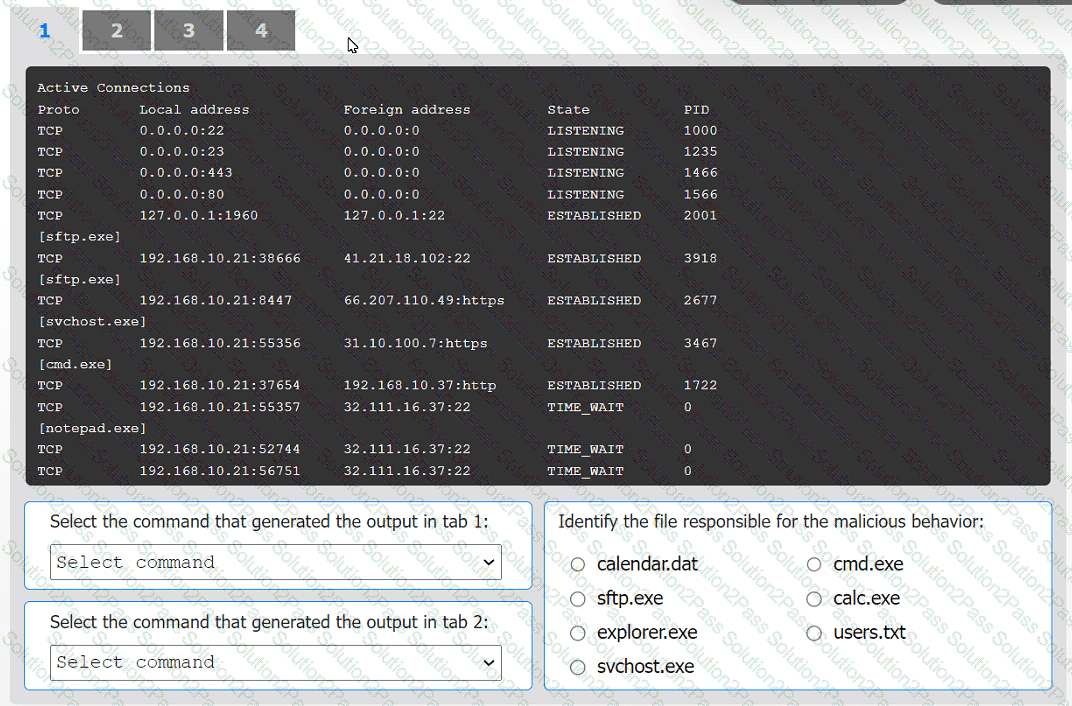
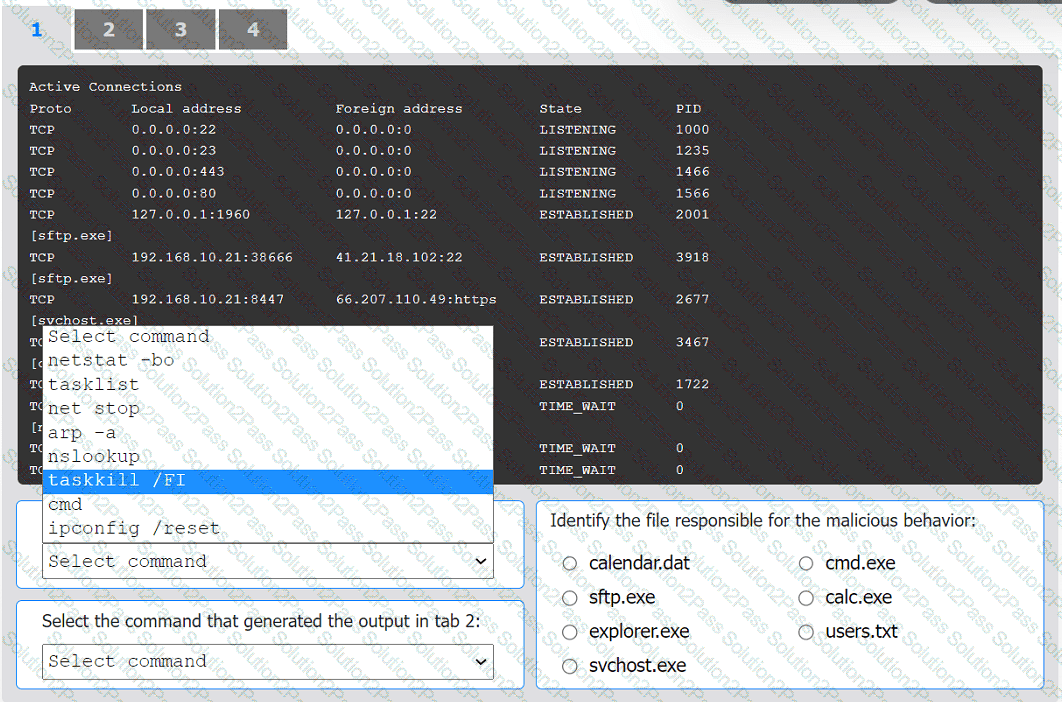
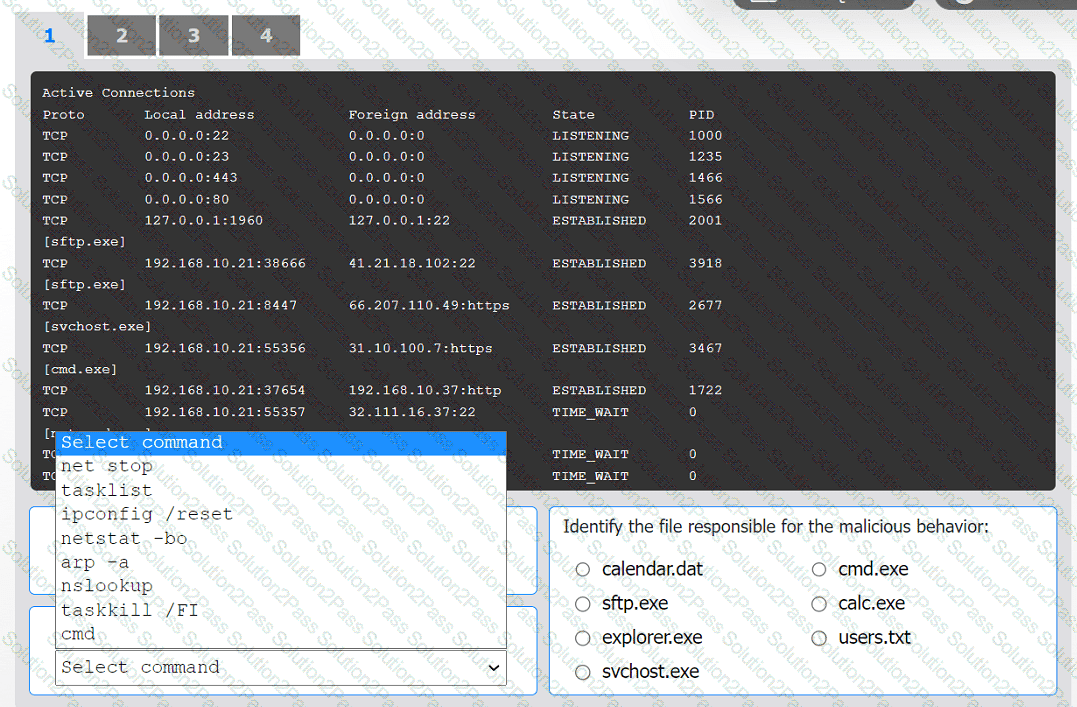
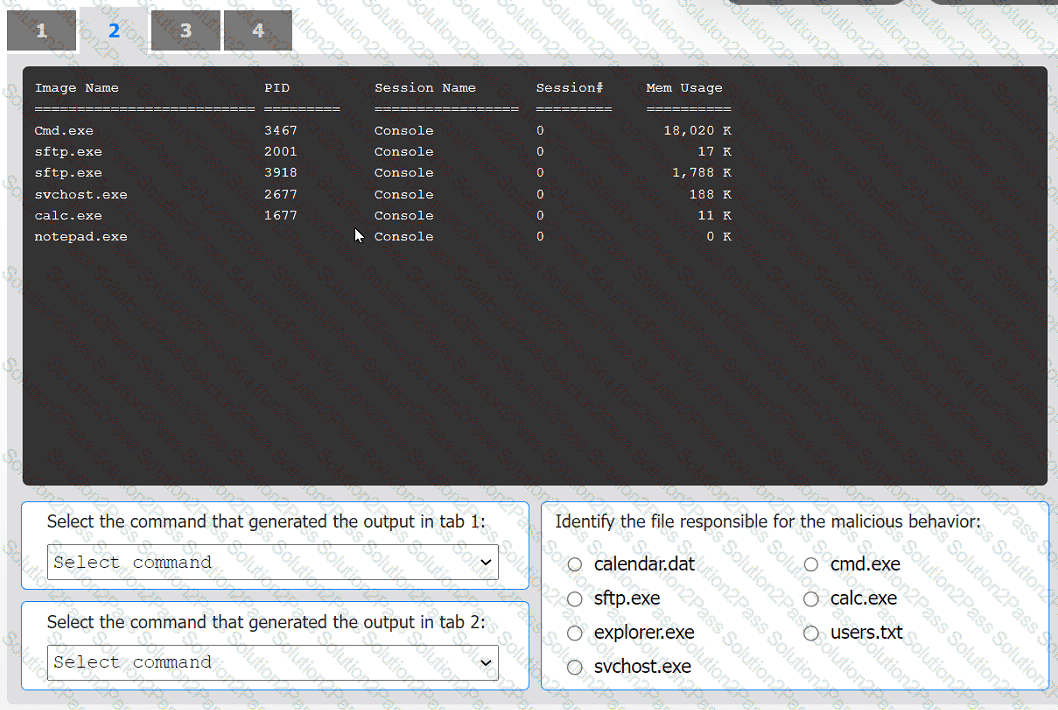
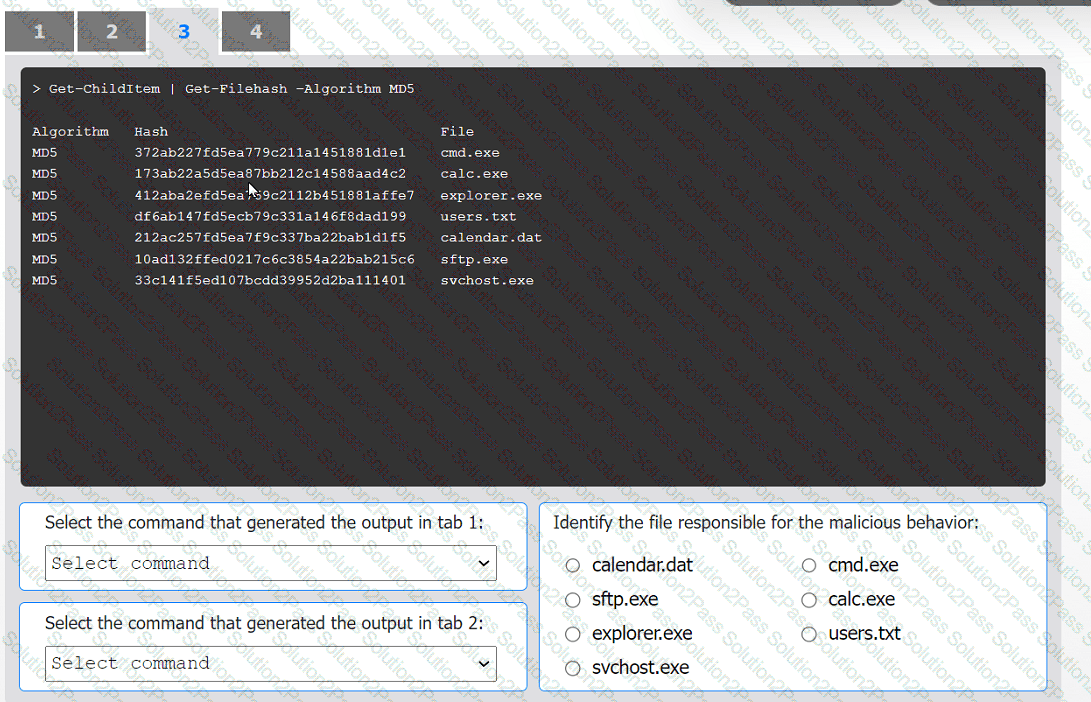
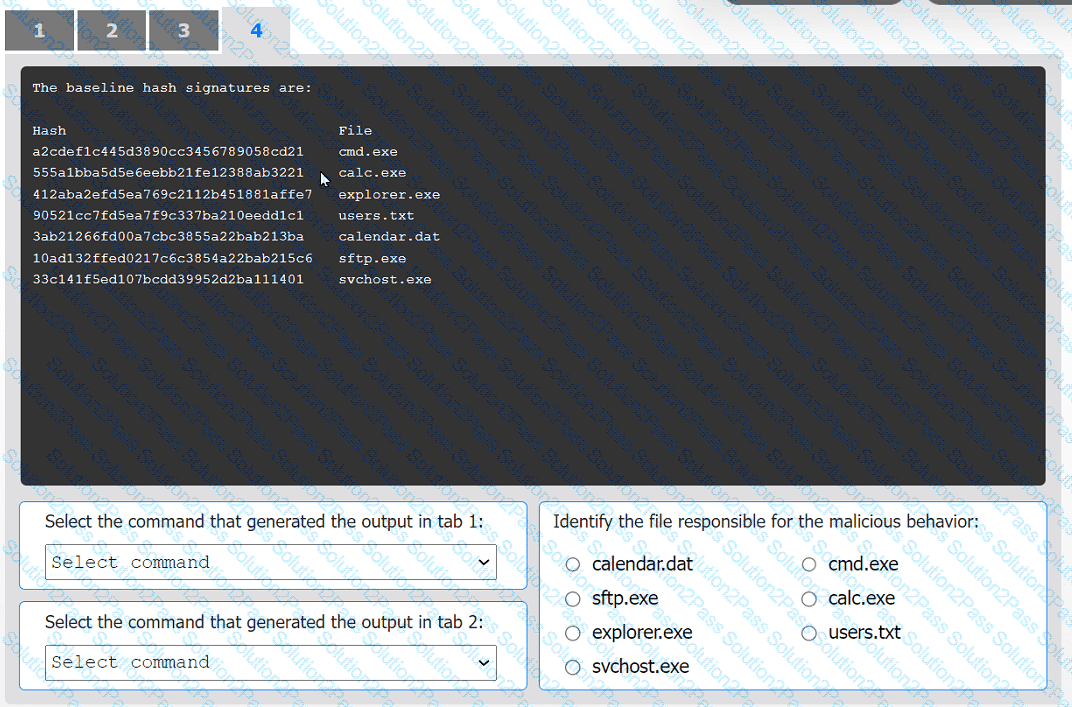
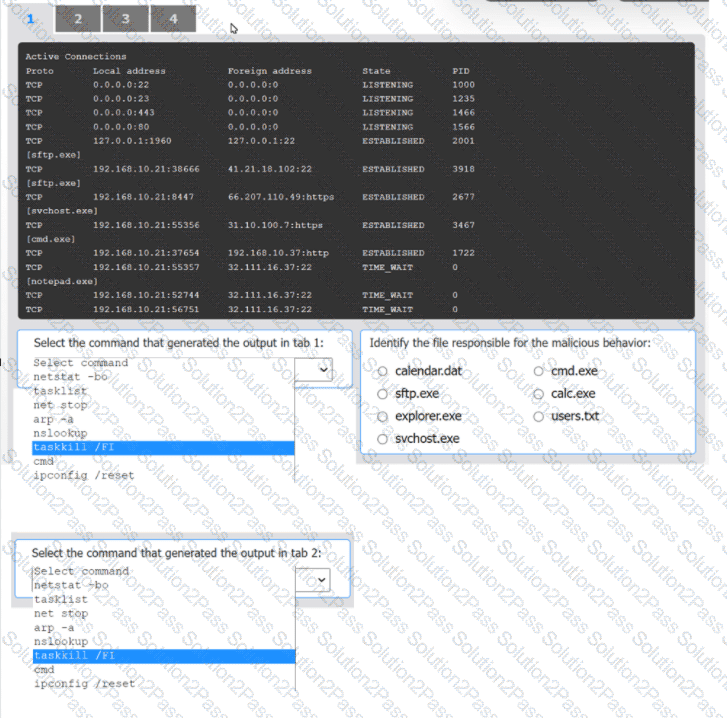
An analyst receives threat intelligence regarding potential attacks from an actor with seemingly unlimited time and resources. Which of the following best describes the threat actor attributed to the malicious activity?
Executives at an organization email sensitive financial information to external business partners when negotiating valuable contracts. To ensure the legal validity of these messages, the cybersecurity team recommends a digital signature be added to emails sent by the executives. Which of the following are the primary goals of this recommendation? (Select two).
While reviewing the web server logs a security analyst notices the following snippet
..\../..\../boot.ini
Which of the following is being attempted?
A systems administrator is reviewing after-hours traffic flows from data-center servers and sees regular outgoing HTTPS connections from one of the servers to a public IP address. The server should not be making outgoing connections after hours. Looking closer, the administrator sees this traffic pattern around the clock during work hours as well. Which of the following is the most likely explanation?

